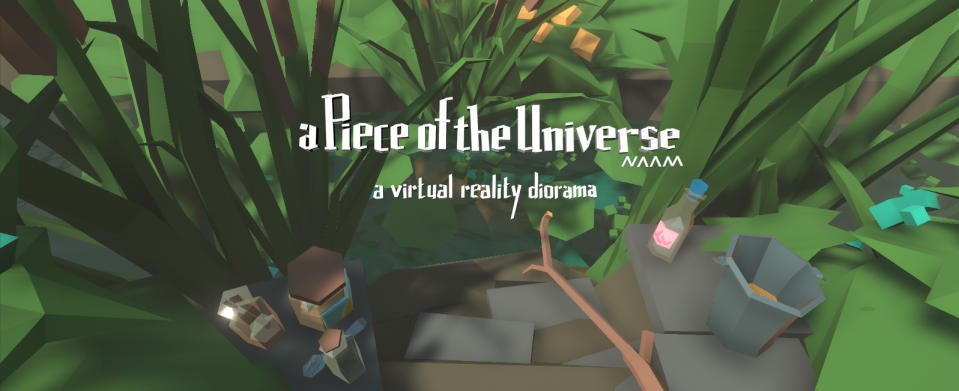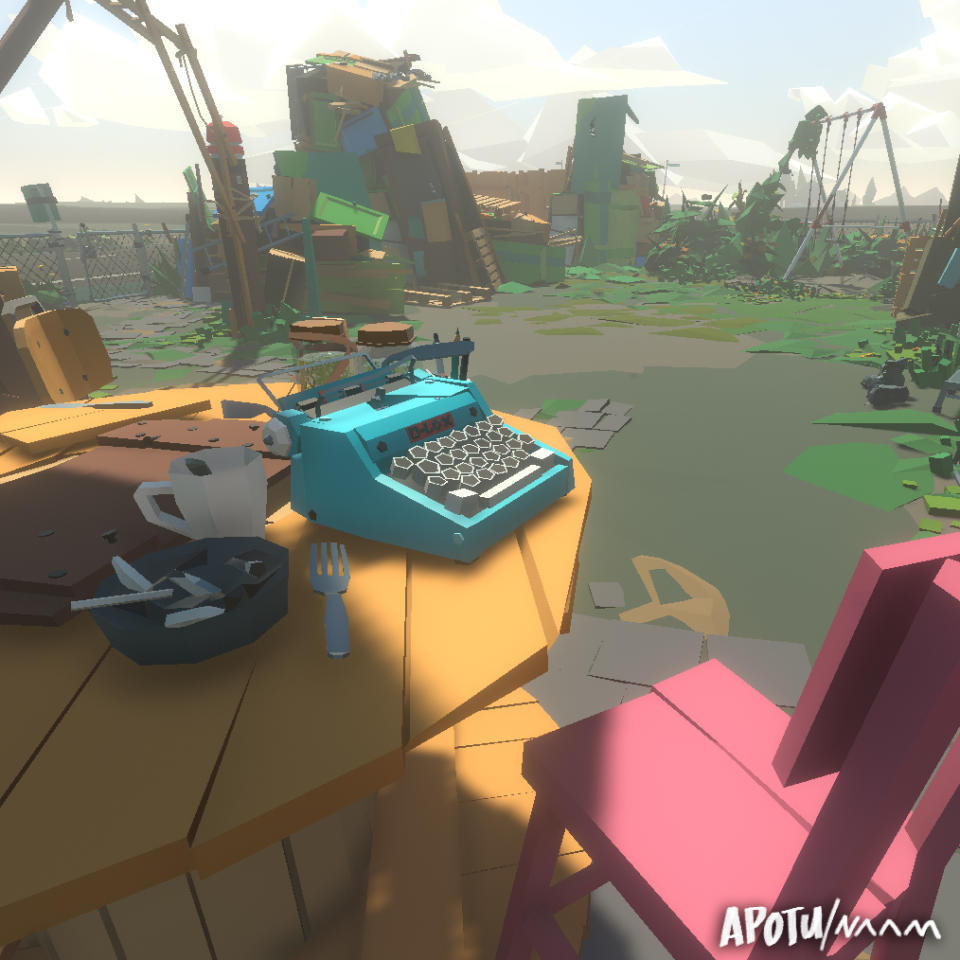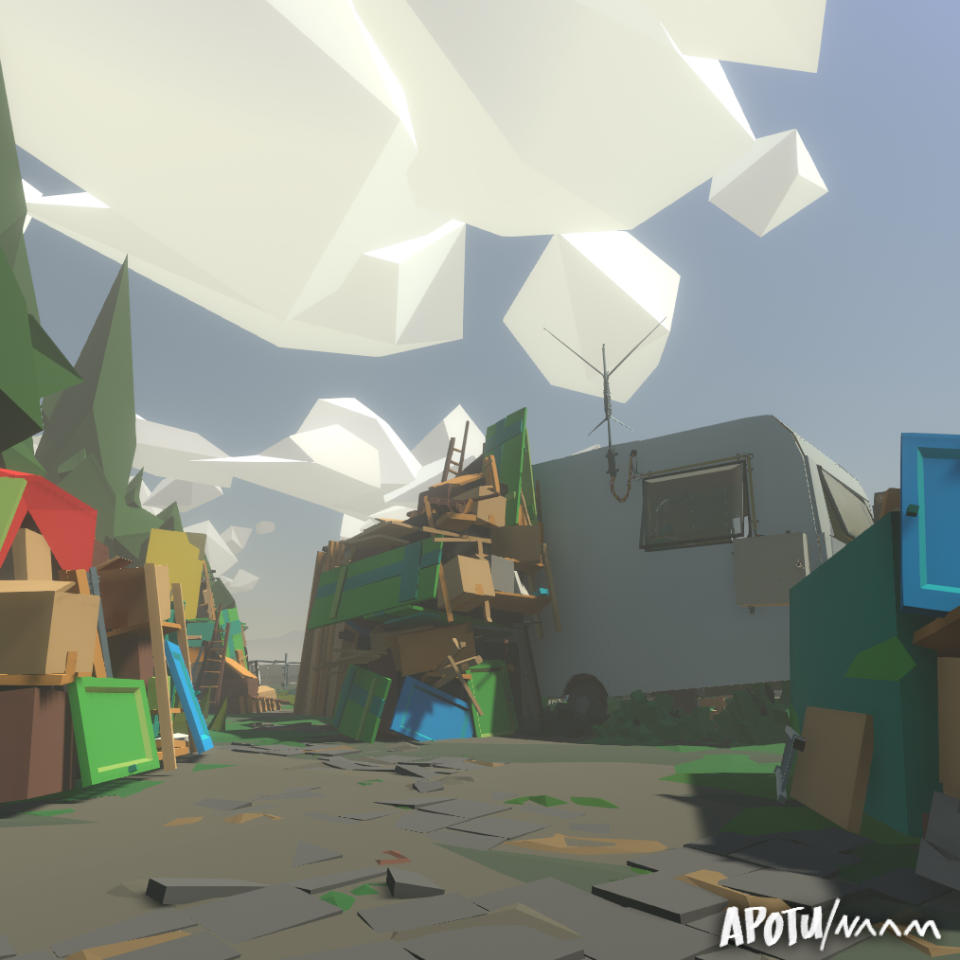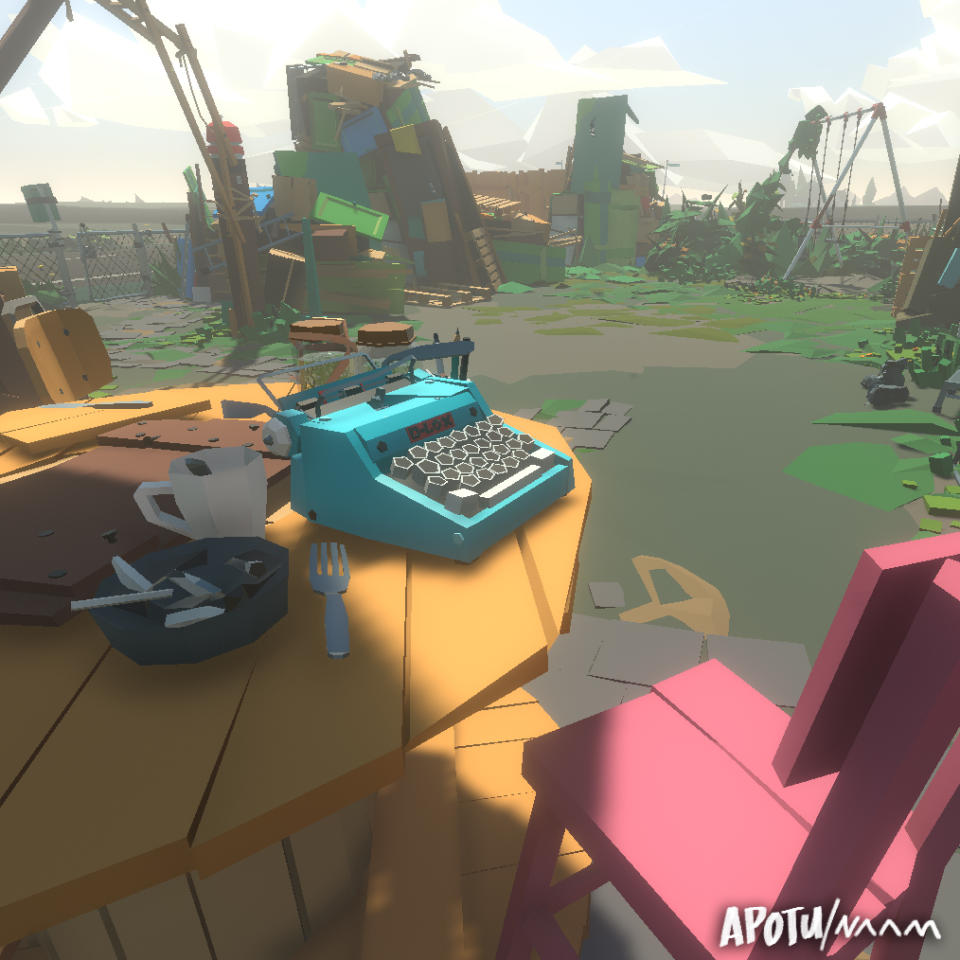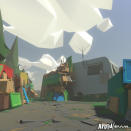One man built his own vacation spot in VR
Bastiaan 'Naam' Hooimeijer crafted 'A Piece of the Universe' using Google Blocks.
When most people fancy a vacation, they pack up their suitcase and go somewhere warm like Barbados. Not Bastiaan Hooimeijer, who goes by the name "Naam" online. Instead, he built his own holiday spot inside virtual reality. The result — crafted using Google Blocks — isn't an idyllic beach or a villa hidden in the French Riviera. It's a small caravan in a poky piece of land surrounded by piles of discarded junk. The world is bright and colorful, but it's not the sort of place that Lonely Planet would send one of its travel writers.
Still, A Piece of the Universe is impressive. With some virtual-reality hardware, including a pair of wand-style controllers, you can pick up everyday objects and quickly teleport over short distances. "I'm not a vacation kind of guy," Naam explains. "I never go anywhere, but I do have some escapist urges." There's plenty to see and do. You can wander to a small river, for instance, and prod some waterlilies with a stick, or check the post box and sift through the mail while cars hurtle past. If you're feeling cold, you can strike a match and light the caravan's wood burner, or bash at a typewriter with the grace of the Incredible Hulk.
These activities are all very pedestrian, but that's the point. It's supposed to be a place that you can quickly visit and relax in for 10 or 15 minutes. A virtual hideaway for when life gets a little too stressful.

Naam is the co-founder of Happy Ship, a 3D animation studio based in the Netherlands. He loves comics and fell in love with computers, and 3D animation, after leaving the Minerva Art Academy and "stumbling" into a job in desktop publishing. Pixar's first feature-length film, Toy Story, had just been released and Naam was keen to work on his own movies. He met some like-minded people and formed Happy Ship after Maxon, the creators of 3D modeling software Cinema 4D, asked for a small technical demo.
"Since then we've just been saying yes to a lot of stuff," he said. "Can you do visual effects? 'Sure, sure we can do it!' We had no idea, but we managed." Fifteen years later, Naam and Happy Ship continue to work in film and visual effects. Most of their projects are for the Dutch market, though, which is why you probably haven't heard of them. They're a talented bunch, winning a prestigious Golden Calf — the Dutch equivalent of the Oscars — for the 20-minute short Polska Warrior last September.
Naam discovered VR through a colleague who had backed the original Rift on Kickstarter. He tried it on and immediately fell in love. "It's really a new medium," he said. "A lot of people approach it like it's a new way to be entertained, but really, especially for artists, it's a new medium of expression." The hardware, of course, was primitive compared to the consumer version that launched in early 2016. Still, it was a captivating piece of hardware, and more than capable of running Naam's early experiments inside Unity, a popular video game engine.
Google released Blocks, a 3D modeling application for the Oculus Rift and HTC Vive, in July 2017. It's a free piece of software aimed at developers and artists who want to quickly build custom objects. The app lets you insert, manipulate and color 3D shapes, or "blocks," to create something entirely new. Grab a cone and a few multicolored spheres, for instance, and you soon have an ice cream that's ready to be exported into a larger scene.
Naam had been toying with the idea of a virtual caravan for a few years. He decided to take a vacation and spent the time off modeling his dream camper in Blocks. The animator liked the tool because its angular, low-poly aesthetic fit with his own drawing style. "There was some magic click that I had with the app," he said. Sculpting in VR also made it easier to judge scale. With traditional 3D modeling software, you have to estimate size on-screen and then check if it feels right in VR. In Blocks and VR painting apps such as Tilt Brush and Quill, the process is simplified because you're already seeing the object from a first-person perspective.
"There's something fishy about the place, obviously."
From the outset, Naam was posting development teasers on Twitter. These videos quickly blew up, attracting hundreds — sometimes thousands — of retweets and questions. Naam was floored by the response and decided to release a version that anyone could play December 23rd, 2017. Again, the reaction was positive, and Naam was encouraged to continue the project. Over the next few months, he worked on various bug fixes and a wealth of new objects, including a lighter — which introduced fire to the experience — fireworks and a fridge. His most recent update added a typewriter, mail and plumbing.
A Piece of the Universe is, however, still a passion project. It's technically free to download — customers set their own price — and it's listed as a "prototype" on Naam's Itch.io page. Players know, therefore, that updates will be small and infrequent. "It's a very nice way of working," Naam said.
He's now exploring whether A Piece of the Universe should have its own story. As you walk around the caravan, it's natural to wonder who might have lived there before and, more important, what happened to them. "It's not developed so far that I can talk about it out loud," he said, "and I'm still discovering it myself." There are hints in the world, though. There are some old photographs, for instance, and cars toot loudly when they drive past. "There's something fishy about the place, obviously," he said.

The most intriguing part of the experience, though, starts when you don a pair of headphones in the caravan. You're suddenly transported to a bizarre, dreamlike version of reality with a purple sky and a giant "mudskipper" ship that rips through the campsite. Is it a dream, a vision or something else entirely? Naam is tight-lipped but hinted that he always wanted to have a game with "little outings into different planes of reality." How that will evolve, though, and fold into the larger story is unclear. Maybe the caravan is on a mystical burial site; perhaps these dimensions are the key to understanding the previous owner's disappearance.
"Maybe you can dive into the typewriter at certain moments, or into the little ditch behind the fence," Naam said. "I don't know! I can't make any promises. But that's next on the list. If all the basic details are more or less finished, I want to make little fantasy outings."
What's a holiday, after all, without a few memorable excursions?


